How to Buy Ethereum (ETH) in 2024 – Easy Guide
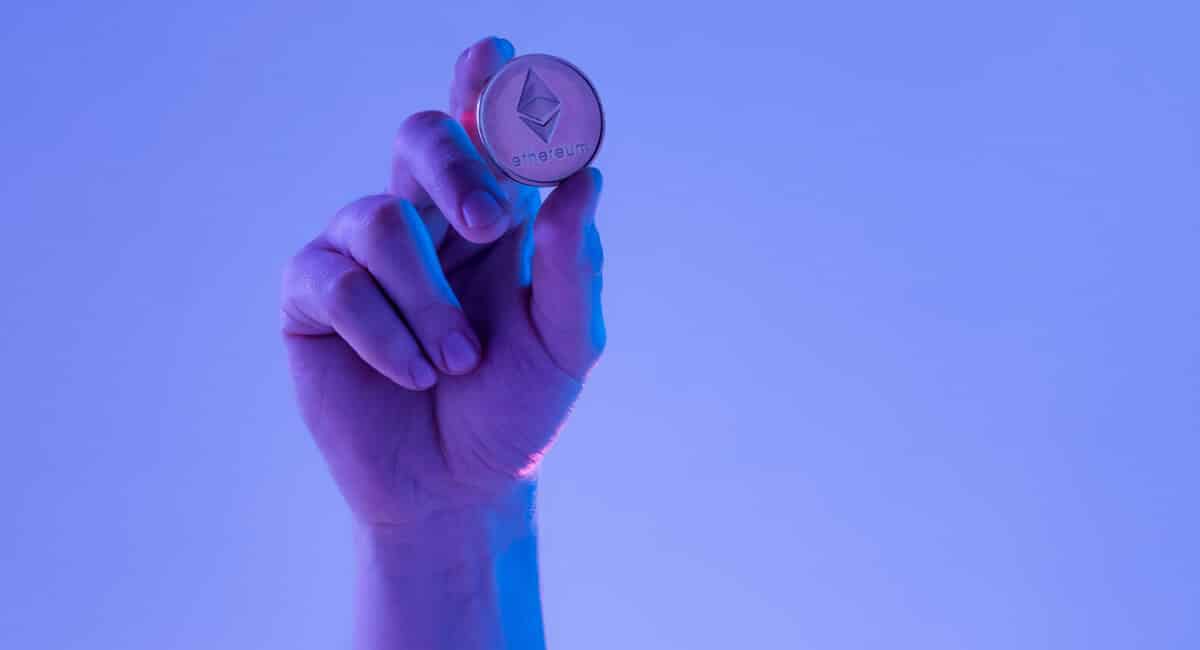
Had you invested in Ethereum during its 2014 ICO, you would have paid just $0.31 per ETH. Today, Ethereum is a multi-billion dollar asset class with all-time highs of almost $5,000. This translates to gains of over 1.6 million percent.
This guide explains how to buy Ethereum in 2024. We also explore the best places to invest in ETH, and what considerations to make before proceeding.
Key Considerations Before Buying Ethereum
There’s a lot to consider before exploring how to invest in Ethereum so it’s key to understand what Ethereum is in the first place. Crucially, like all digital assets, Ethereum is volatile. The value of your investment can rise and fall dramatically, so investors should be preferred for a bumpy ride. For example, after Ethereum hit all-time highs of almost $5,000 in November 2021, it dropped to lows of just over $1,000 a year later.
This represents a rapid decline of 80%. This shows that market timing can greatly impact your investment returns. After all, Ethereum has since recovered to 52-week highs of $2,700. Dollar-cost averaging your Ethereum investments can reduce the risks of short-term volatility. In addition, most countries tax cryptocurrencies like Ethereum.
In the US, for example, Ethereum is considered property by the IRS, so capital gains tax will be required on profits. What’s more, if you decide to ‘stake’ Ethereum for passive rewards, the proceeds will be taxed as income. In terms of regulatory implications, Ethereum can be bought and sold legally in most countries.
The SEC has already confirmed that Ethereum isn’t a security, so the project is clear to operate without regulatory hurdles. This is unlike XRP, which is still embroiled in a court case with the SEC. Ultimately, it’s important to keep tabs on industry and project developments when investing in Ethereum. These factors will determine Etehreum’s value over time, so it’s wise to be informed.
How to Buy Ethereum
Let’s move on to our beginner’s guide on how to buy ETH in 2024.
Step 1: Selecting a Trading Service or Venue
There are many ways to invest in Ethereum, so the first step is deciding on the best avenue. In terms of convenience, safety, and speed – cryptocurrency exchanges are the best option. These are similar to stock brokers but they specialize in digital assets rather than shares. Ethereum is listed on hundreds of cryptocurrency exchanges, so you’ve plenty of options.
First-time investors should look for exchanges offering a user-friendly experience. This means a simple registration process and support for everyday payment methods, like bank transfers and debit/credit cards. Fees are another important factor to explore. We prefer exchanges with low deposit fees and competitive Ether trading commissions.

And of course, safety and security should be assessed. For instance, is the Ethereum exchange licensed to operate in your country of residence? And if so, how long has it been trading and how many users does it have? Asking these questions will ensure you buy Ethereum with a legitimate provider.
Step 2: Register With an Ethereum Exchange
Next, investors will need to open an account with their preferred Ethereum exchange. The registration process is similar across most providers.
- Get started by entering an email address and choosing a strong password.
- It’s also wise to set up two-factor authentication (2FA) if this is offered. 2FA will protect your account from unauthorized parties.
Assuming you want to buy Ethereum with your local currency, you’ll need to complete a quick KYC process. This comes in two steps.
First, provide the Ethereum exchange with some personal information and contact details. Second, upload some verification documents, including proof of identity (e.g. driver’s license) and address (e.g. bank statement).
Step 3: Connect to a Payment Option
A deposit will need to be made before you can buy Ether. The best cryptocurrency exchanges directly accept fiat payment methods like Visa, MasterCard, Neteller, PayPal, and bank transfers.
That said, some use third-party payment gateways like Simplex, Ramp, and Moonpay. Either way, choose your preferred payment method, type in the deposit amount, and confirm.
Step 4: Understanding Fees and Costs
Several fees should be considered when buying Ethereum from an exchange. These fees should be built into your cost basis, ensuring you know exactly how much you’re making or losing.
- For a start, consider how much you paid to deposit funds. For example, suppose you deposited $500 with a debit/credit card and paid a 2% fee.
- This means you need the price of Ethereum to increase by 2% just to break even.
- What’s more, you’ll also need to factor in commissions. For instance, if you paid a 1% commission to buy Ethereum, that’s another 1% added to your cost basis.
If you’re planning to dollar-cost average your Ethereum investments, it’s wise to create a spreadsheet. Each investment will adjust the average cost price, so you’ll have a firm grasp of your position.
Step 5: Placing an Ethereum Order
With a verified and funded account, you can now buy Ethereum.
Some cryptocurrency exchanges offer a simple conversion model. This means you simply need to type in how much Ethereum you want to buy and the exchange will complete the order instantly.
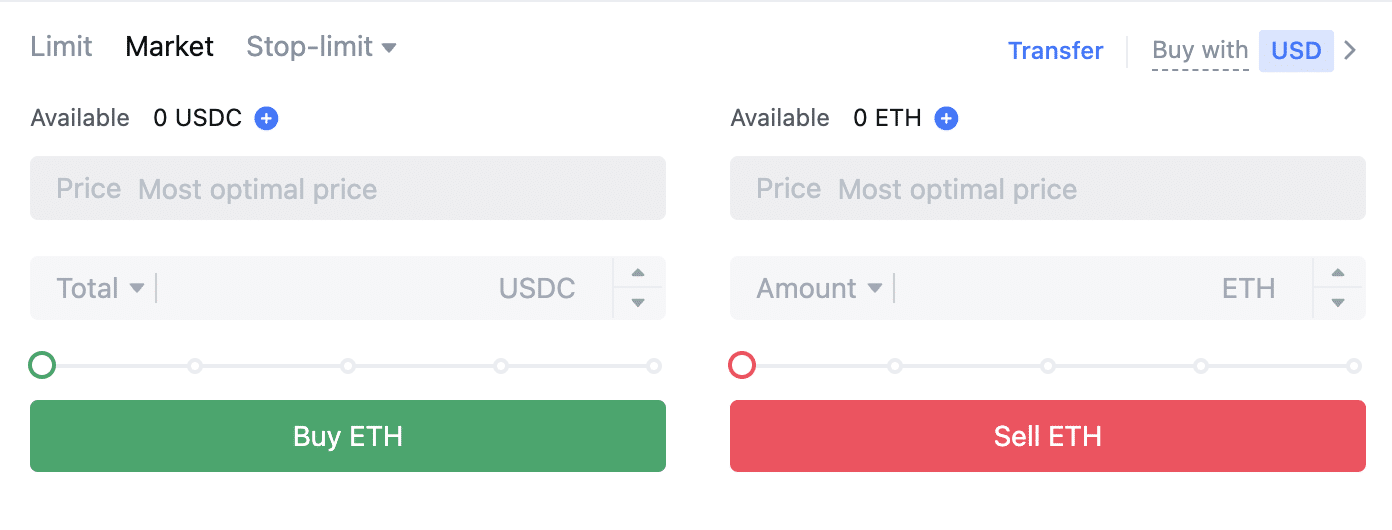
Some cryptocurrency exchanges require you to place a manual order. In this instance, search for ‘Ethereum’ and select a ‘Market’ order. Input the investment amount and confirm The exchange will execute the buy order at the best available price.
Step 6: Safe Storage
After buying Ethereum, the ETH coins can be found in your exchange account. The ETH can be kept there until you want to sell. However, the safest option is to withdraw the ETH coins to a private wallet. This removes the need to trust that the ETH coins are safe. After all, if the Ethereum exchange is hacked, you could lose your investment.
What’s more, the best Ethereum wallets offer self-custody storage. This means you have control of your private keys. You also have full control over incoming and outgoing transactions. We discuss which storage options are best for beginners later in this guide.
Where to Buy Ethereum
Still not sure where to buy Ether in 2024? Read on to discover the most popular investment options.
Cryptocurrency Exchanges
Cryptocurrency exchanges offer the best way to buy Ethereum. There are hundreds of providers to choose from, but we’ve narrowed our selection down to just two.
1. MEXC – Buy and Sell Ethereum With Low Commissions
MEXC is a popular cryptocurrency exchange that supports some of the best cryptocurrencies to buy, including Ethereum. Verified accounts take minutes to set up. After that, you can buy Ethereum instantly with fiat money. Payment options include Visa, MasterCard, local bank transfers, and selected e-wallets.
The minimum Ethereum purchase is just $30. The ETH coins will then be added to your MEXC account straight away, meaning you don’t need to worry about placing market orders. MEXC fees will vary depending on several factors. For instance, whether a third-party gateway is used, the preferred currency, and the selected payment type.
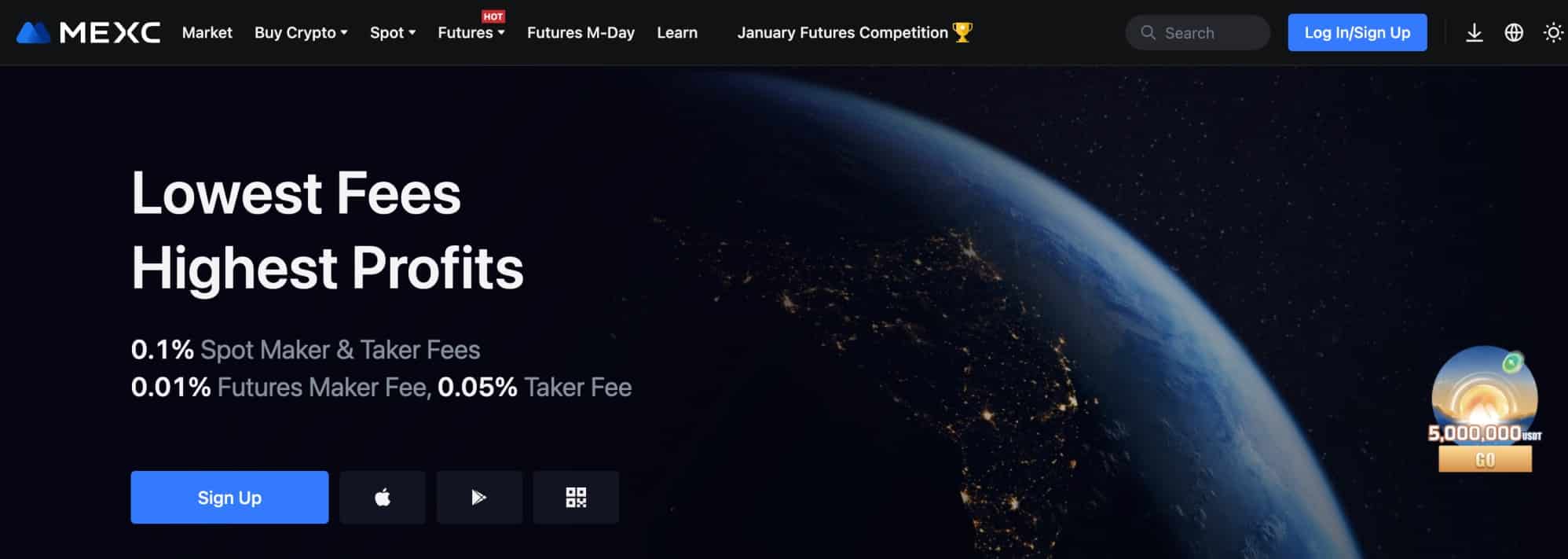
That said, trading commissions are fixed at just 0.1%. This means you’ll pay just $0.10 in commission for every $100 you trade. MEXC doubles up as an Ethereum savings account, with competitive APYs of 4.8% currently being offered. There are no withdrawal penalties, meaning you can cash out at any time.
Pros
- In our view, the overall best place to buy Ethereum in 2024
- Accepts local bank transfers, debit/credit cards, and e-wallets
- Pay just $0.10 in commission for every $100 traded
- Supports hundreds of other altcoins
- Huge liquidity levels ensure competitive pricing
Cons
- Clients from the US, Canada, and Singapore are not accepted
- Fiat payment fees can be high when using a third-party gateway
| Exchange | Deposit Fee | Commission to Buy Ethereum |
| MEXC | Stated when making the debit/credit card deposit. Varies depending on the payment method, currency, and country of residence | 0.10% |
2. Binance – Great Option for Buying and Earning Ethereum
Binance offers a huge ecosystem that not only covers an Ethereum exchange but also earning tools. This means you can buy and earn ETH rewards on the same platform. Binance accepts fiat money deposits via debit/credit cards and local bank transfers. However, not all countries are supported for fiat payments, so you’ll need to confirm this before proceeding.
Nonetheless, Binance charges a maximum commission fee of 0.10%, which is reduced when trading larger amounts. Fees can also be reduced when holding BNB, Binance’s native cryptocurrency. Binance supports Ethereum 2.0 staking, with APYs currently paying 2.86%. Flexible Ethereum savings accounts are also available, but these yield just 0.83%.
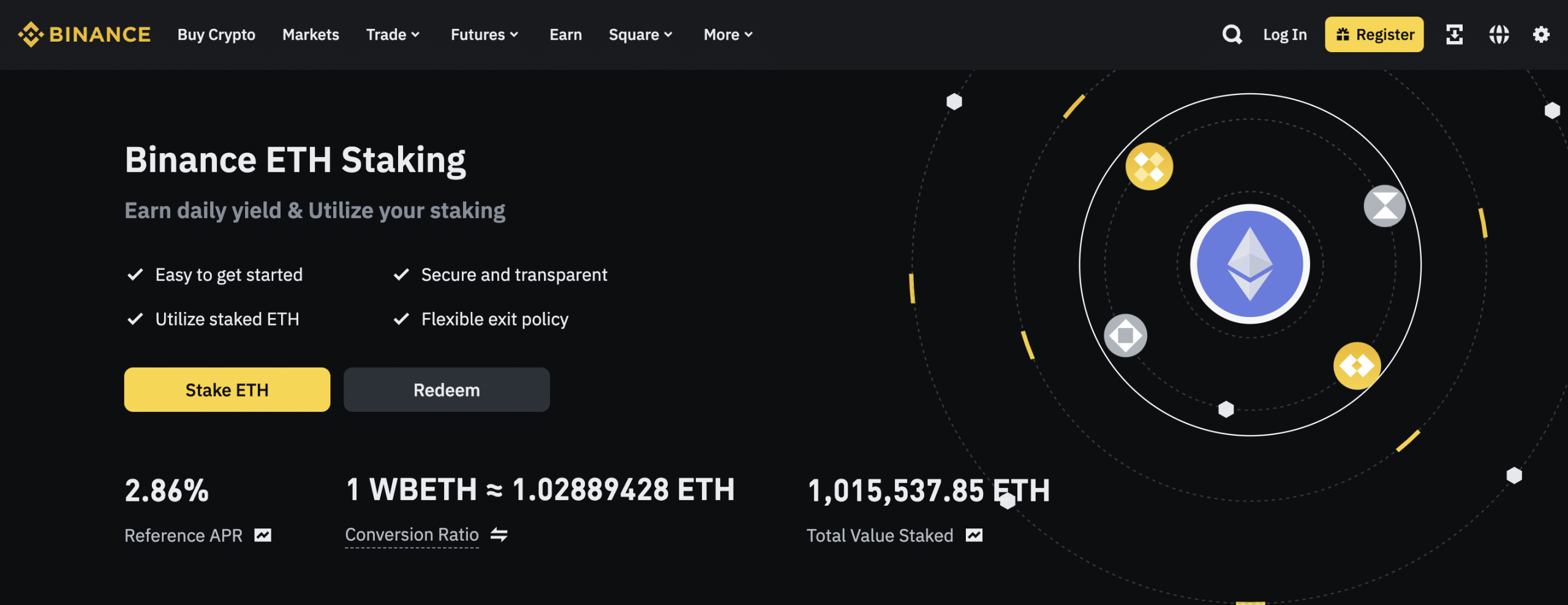
High-risk investors might also consider Ethereum dual investments, with APRs of over 123% on offer. Binance is also a great option for technical traders. It offers advanced analysis features like indicators and chart drawing tools. Binance also offers Ethereum futures and options. Although Americans are welcome, there’s a separate Binance platform for US clients.
Pros
- Trade Ethereum with advanced analysis tools
- Offers ETH staking, savings accounts, and dual investments
- Buy Ethereum at a commission of just 0.1%
- Mobile app for iOS and Android
- US clients have access to a dedicated platform
Cons
- Fiat payments aren’t available in all countries
- Beginners might find the trading dashboard intimidating
| Exchange | Deposit Fee | Commission to Buy Ethereum |
| Binance | Depends on the exchange (US or global), payment method, and currency. Some banking methods are fee-free. Debit/credit cards average 2% | 0.10% |
DeFi Platforms
Although cryptocurrency exchanges are the best option when buying Ethereum, some investors prefer decentralized finance (DeFi) platforms. This offers an alternative experience, as you can often trade without opening an account or providing any personal information.
We rate Best Wallet as the best decentralized exchange. Read on to find more.
Best Wallet – Buy Ethereum Anonymously at Competitive Fees
Best Wallet is a DeFi platform that offers an exchange and a decentralized wallet. Not only does it support Ethereum but all ERC-20 tokens. It’s also compatible with other blockchain standards, including Binance Smart Chain and Polygon. Investors won’t need to open an account when using Best Wallet. Nor do they need to provide any personal information.
The only requirement is to connect a private wallet to the exchange, such as MetaMask or Trust Wallet. That said, the wallet must already be funded with a cryptocurrency. This is because you’ll be swapping another cryptocurrency for Ethereum. The trade will be executed by decentralized liquidity pools.
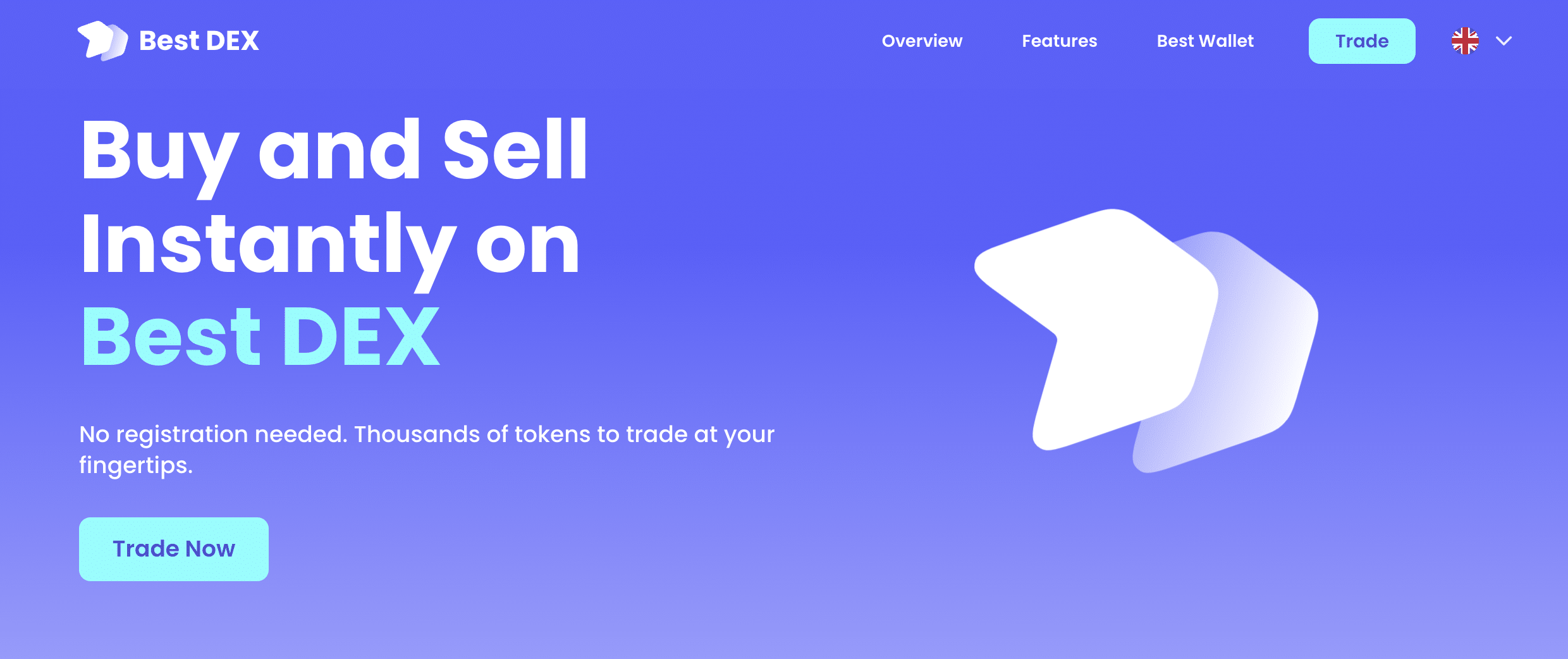
This means you can buy Ethereum without needing another market participant. Fees are very competitive; Best Wallet doesn’t add any markups to the prices it secures. Investors will need to cover the network fee, as trades are conducted by smart contracts. Once the Ethereum purchase is made, the ETH coins will be added to your connected wallet.
Pros
- Buy Ethereum without opening an account
- Connect a wallet and trade instantly and anonymously
- Supports all ERC20 and BEP20 tokens
- No added markups on exchange rates
- Simple trading dashboard is ideal for newbies
Cons
- While fiat gateways are supported – this requires ID verification
- Ethereum staking tools aren’t yet available
| Exchange | Deposit Fee | Commission to Buy Ethereum |
| Best Wallet | No fees for cryptocurrency deposits. Fiat gateway fees are determined by the payment provider | None – exchange rates are determined by the liquidity pool. Network fees apply |
Crypto ATMs
Cryptocurrency ATMs allow you to buy Ethereum in the real-world. They work like conventional ATMs but in reverse. This is because you’ll be inserting money into the terminal. And in return, you’ll receive Ethereum.
With online exchanges now making it seamless to buy Ethereum, interest in cryptocurrency ATMs is waning. There’s also the issue of high fees.
According to the Federal Reserve Bank of Kansas City, the median fee charged by cryptocurrency ATMs is 16%. Selling cryptocurrency from an ATM averages 15%. The same transaction on MEXC would cost just 0.1%.
Peer-to-Peer (P2P) Platforms
Peer-to-peer (P2P) platforms connect cryptocurrency buyers with local sellers. First, buyers select their preferred payment method and investment amount. A list of sellers is then displayed, sorted by the most competitive exchange rate.
After accepting a deal, the seller must deposit the ETH coins into the P2P escrow. This ensures that the buyer receives the coins once payment is made. The buyer proceeds to make the payment and subsequently receives their coins.
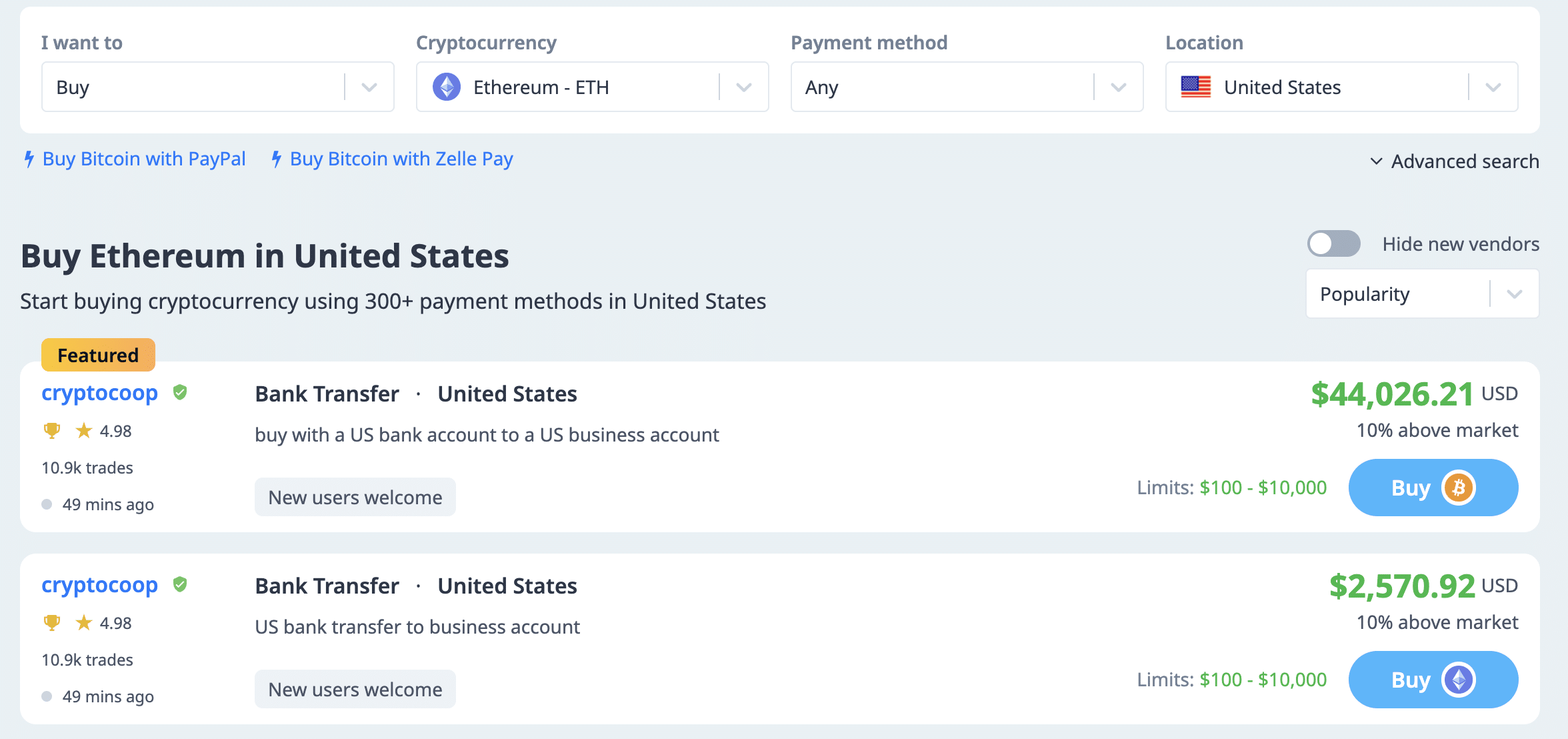
While P2P platforms were once popular with cryptocurrency traders, volumes have declined significantly in recent years. One reason for this is because of increased KYC requirements. Most P2P sellers request ID documents from buyers to ensure they comply with anti-money laundering regulations.
Failing to do so can result in criminal charges. Therefore, this makes P2P platforms less appealing to those wanting to buy Ethereum anonymously.
Payment Gateways
An increasing number of fiat payment gateways have entered the cryptocurrency market in recent years. Some of the most popular include:
- Moonpay
- Simplex
- Banxa
- Mercuryo
- Onramper
These providers form a bridge between cryptocurrency platforms and fiat money. For example, many Ethereum wallets will form partnerships with a payment gateway. This enables users to buy and sell Ethereum within their wallet interface, meaning an exchange isn’t required.
Payment gateways are also used by exchanges if they’re not licensed to handle fiat money. However, using a payment gateway can be expensive. We found that some providers charge upwards of 5% – sometimes more.
Cryptocurrency Apps
Most cryptocurrency exchanges offer a native app for Android and iOS. This allows users to buy Ethereum while on the move. Apps usually connect with a desktop website, meaning users can switch between the two at any time.
What’s more, cryptocurrency apps often double up as an Ethereum wallet.
Storing Your Ethereum Safely
Buying Ethereum is just one part of the investment process. The next step is to consider storage. After all, cryptocurrencies like Ethereum are highly sought after by hackers. Therefore, ensuring your ETH coins are kept safe is crucial.
Let’s explore how the best crypto wallets work when storing Ethereum.
Crypto Exchanges
Once you buy Ethereum on a cryptocurrency exchange, the ETH coins will remain in your account. The coins are held in a wallet controlled by the exchange, meaning you won’t have access to your private keys. This presents some risks.
For a start, you can only transfer ETH to another wallet after the transaction is approved by the exchange. This goes against the decentralized ethos of the Ethereum blockchain.
Another risk is if the exchange is hacked. This could provide the hacker access to your ETH coins, resulting in a loss of funds. That said, some investors keep their ETH on exchanges for added convenience. However, we’d advise against this.
Cold Wallets
If you’re looking for the safest way to store Ethereum, consider a cold wallet. The leading providers in this space are Ledger Nano and Trezor. Both offer cold wallets via a hardware device.
The main benefit of a cold wallet is that they’re never connected to the internet. This makes remote hacks almost impossible. What’s more, you’d need to enter a PIN on the device to authorize Ethereum transfers.
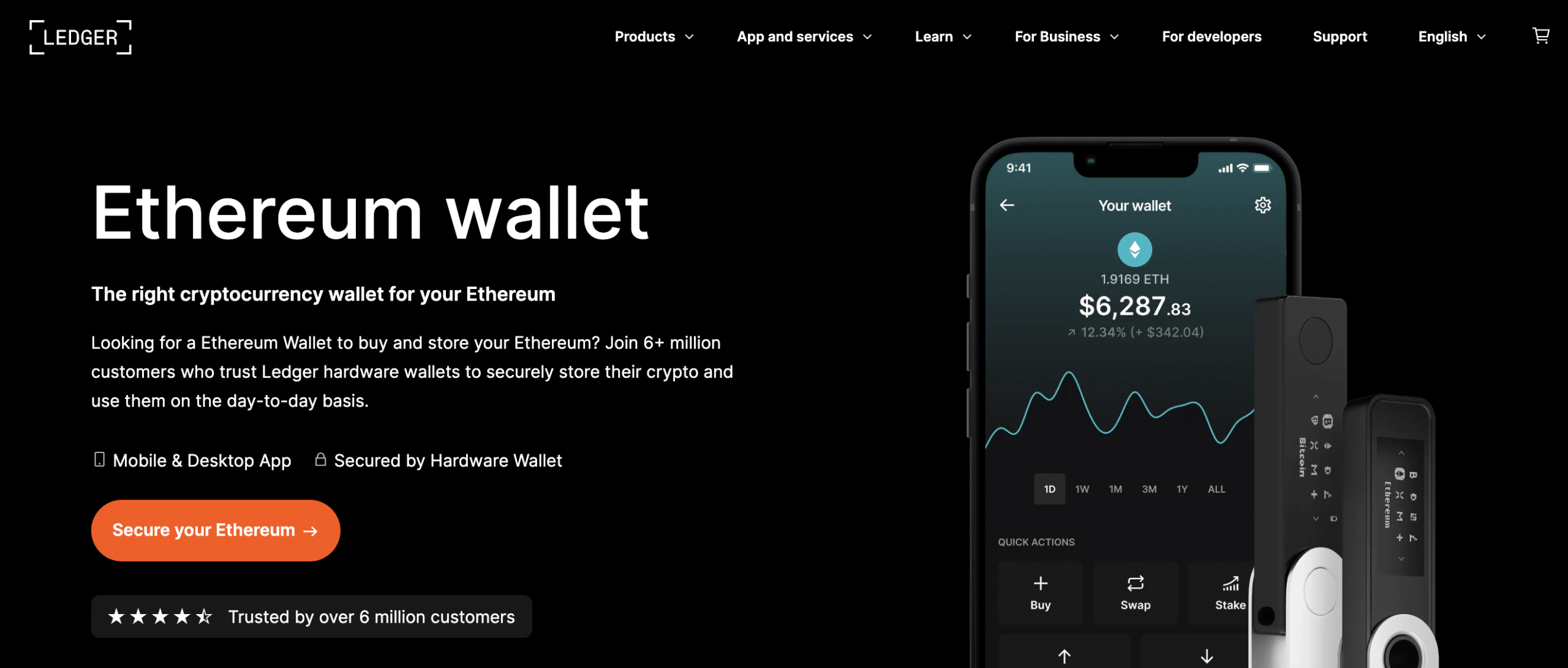
The best hardware wallets are secured by backup passphrases, which are usually a string of 12 random words. You’ll need this if the hardware device is lost, damaged, or stolen. Ultimately, if you’ve invested a consequential amount into Ethereum, opt for a cold wallet.
Paper Wallets
If you can’t afford to buy a hardware wallet, consider a paper wallet. Both achieve the same goal – as they offer cold storage. The main difference is that paper wallets are a lot less convenient. Plus, you’ll only be able to store Ethereum and ERC-20 tokens.
Nonetheless, paper wallets are super-secure.
- First, you’ll need to create a new Ethereum wallet address and a private key. This can be done from most software wallets, such as Trust Wallet.
- Then transfer the ETH coins to the wallet address.
- Next, print the wallet address and private key onto a sheet of paper.
- Finally, delete the software wallet from your device.
At this stage, the paper wallet is the only place storing your private key. If you want to transfer the ETH coins, you’ll need to re-install a software wallet and import the private key.
Hot Wallets
Hot wallets are always connected to the internet. They’re super convenient, allowing you to send and receive ETH coins with ease. Some hot wallets come as a browser extension. This means you can access your wallet from a desktop device.
That said, we prefer mobile hot wallets. They’re still convenient but come with added security. For instance, the best hot wallets come with facial and/or fingerprint ID. All that said, hot wallets are always at risk of being hacked.
Something as simple as clicking an unknown link could be fatal. If a hacker obtains your private key, they’ll be able to access the hot wallet remotely. In contrast, cold wallets are never exposed to live servers.
How is Ethereum Different from Ether
While ‘Ethereum’, ‘Ether’, and ‘ETH’ are often used interchangeably, they refer to different parts of the ecosystem. Ethereum is the decentralized blockchain that facilitates transactions. It also enables developers to create and deploy smart contracts.
Ether is the native cryptocurrency backing the Ethereum blockchain. Ether is required to pay GAS fees when transacting. ETH is simply the abbreviated term for Ether.
So, when you invest in Ethereum, you’re actually buying Ether coins.
If you had invested $1,000 in 2014
- Ethereum held its initial coin offering (ICO) in 2014. Early-stage investors made just $0.31 per ETH.
- A $1,000 investment would have got you 3,225 ETH.
- Ethereum hit an all-time high of nearly $5,000 in 2021.
- Based on 3,225 ETH, this would have valued your investment at almost $16 million.
- Even at current prices, your investment would be worth over $7 million.
- Therefore, this makes Ethereum one of the best crypto ICOs of all time.
How to Sell Ethereum
Ethereum is the world’s second-largest cryptocurrency by market capitalization, so selling your ETH coins is simple and fast. If you already have a verified account with an exchange, this is the best option. You can transfer the ETH coins to the exchange and sell them for fiat money. Binance is a good option here, as bank transfer withdrawals are supported in many countries.
Although MEXC supports fiat money deposits, it doesn’t directly offer withdrawals. You can, however, use the MEXC peer-to-peer exchange. This enables you to sell your ETH coins to a local seller. The seller will transfer fiat to your preferred payment type, such as a bank account or e-wallet.
The other option is to sell ETH coins for another cryptocurrency. This can be done on a decentralized exchange like Best Wallet. No account is required, let alone ID verification. Best Wallet enables you to swap ETH for thousands of other cryptocurrencies, including Tether, Uniswap, and Shiba Inu.
According to CoinATMRadar, hundreds of cryptocurrency ATMs allow you to sell Ethereum. After locating a terminal, you’ll be asked to transfer the ETH coins to the ATM’s wallet address. The cryptocurrency ATM will then dispense cash. However, as we mentioned earlier, the average fee to sell cryptocurrency at an ATM is 15%.
What Can You Buy with Ethereum
Wondering what you can buy with Ethereum in 2024? We found that Crypto Emporium offers thousands of luxury products, from cars and real estate to electronics, designer clothes, and artwork. All items can be purchased securely with ETH coins.
Other merchants accepting Ethereum include Newegg, CheapAir, Overstock, Twitch, and Chipotle. If you find a merchant that’s partnered with BitPay, you’ll also be able to use Ethereum.
Staking Ethereum for Passive Rewards
- If you believe in the future of Ethereum, you might consider staking your ETH coins.
- This means temporarily locking the coins into an Ethereum staking contract.
- In doing so, you’ll help keep the network safe and earn passive rewards.
- These are paid in ETH, so you can organically build your portfolio without investing more money.
What the Future Holds for Ethereum
Launched in 2015, Ethereum is still in its infancy. Even so, it has a huge market capitalization of over $280 billion – making it more valuable than most blue-chip companies. That said, Ethereum still trades more than 50% below its all-time high of almost $5,000. In the short term, investors will aim for a return to all-time high levels.
In the long term, the upside could be unprecedented. According to ARK Invest CEO Cathie Wood, Ethereum could hit $180,000 by 2030. Based on current prices, this would require an upside of over 7,700%. This would also give Ethereum a market capitalization of several trillion dollars.
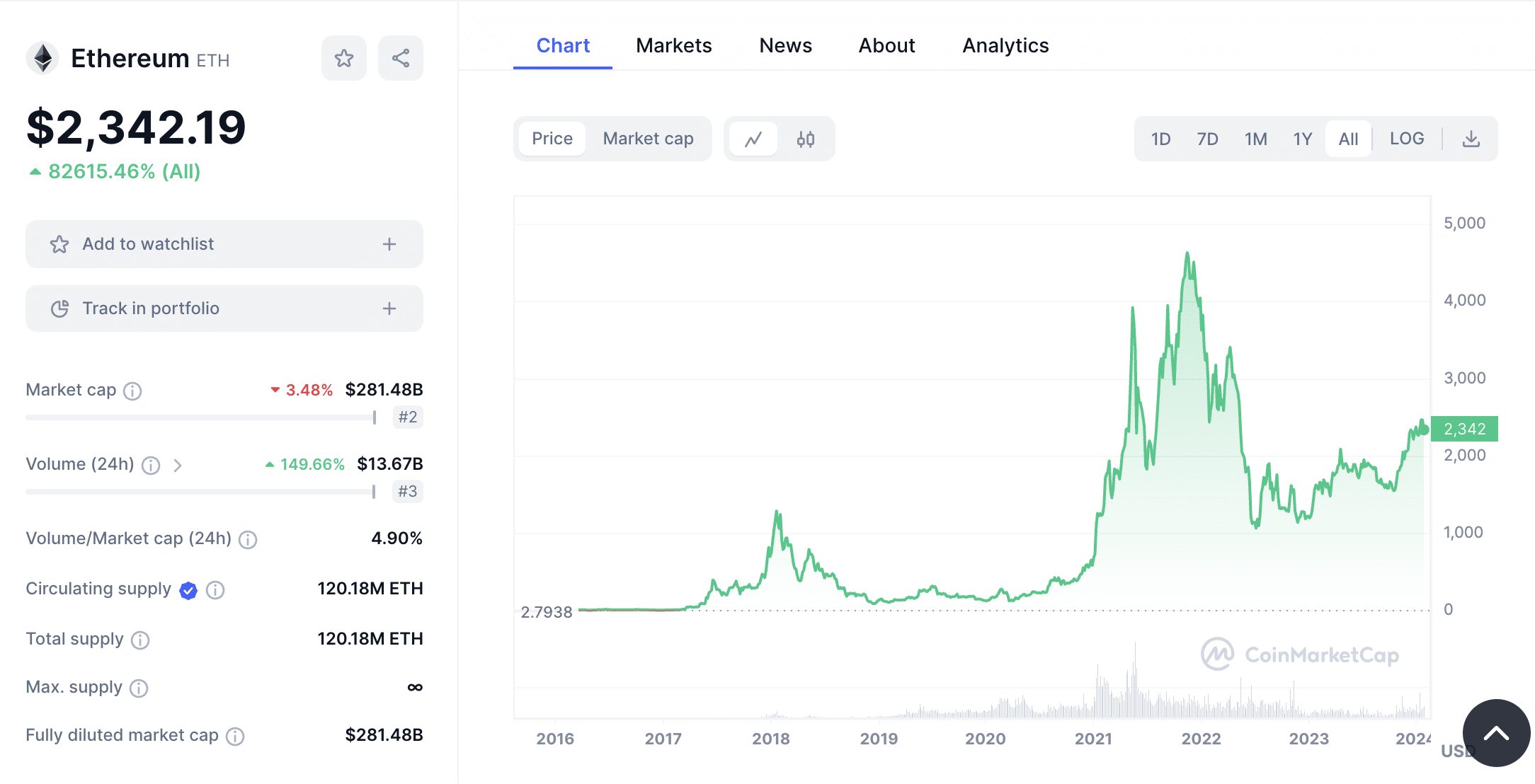
That said, Ethereum’s future is also dependent on its technological advancements. While Ethereum was originally a proof-of-work ecosystem, it has since upgraded to proof-of-stake. This reduced Ethereum’s impact on the environment by over 99%. The proof-of-stake upgrade also means that investors can stake their ETH coins for passive rewards.
However, Ethereum remains a sluggish ecosystem. It can still only handle about 30 transactions per second. In contrast, other smart contract blockchains can handle several thousand transactions in the same time frame. Moreover, Ethereum GAS fees also remain a problem. During busy periods, fees can exceed $10.
There are thousands of decentralized applications operating on the Ethereum blockchain. Each ecosystem requires transactions, which can overload the Ethereum network further. Therefore, for Ethereum to reach its full potential, it must increase scalability and decrease fees. If not, then competitors like Solana could eat away at Ethereum’s market share.
Conclusion
In summary, Ethereum remains the second most popular cryptocurrency after Bitcoin. It offers huge upside potential, although it must improve on scalability to fend off competition from other blockchains.
Considering it now trades over 50% below all-time highs, now could be a great time to buy Ethereum. MEXC offers a safe place to invest and charges commissions of just 0.1%. MEXC also offers Ethereum savings accounts with APYs of 4.8%.
References
- https://www.cnbc.com/select/how-is-crypto-taxed/
- https://www.reuters.com/article/us-cryptocurrencies-ether-idUSKBN1JA30Q/
- https://www.kansascityfed.org/research/payments-system-research-briefings/the-controversial-business-of-cash-to-crypto-bitcoin-atms/
- https://ethereum.org/
- https://www.bloomberg.com/news/articles/2022-12-06/ethereum-cut-its-energy-use-99-but-climate-gains-may-be-curbed
- https://coinmarketcap.com/currencies/ethereum/
Frequently Asked Questions (FAQs) About Buying Ethereum
How do I buy Ethereum?
You can buy Ethereum on MEXC at commissions of just 0.1%. Open an account, upload your ID, and buy Ethereum instantly with a debit/credit card. Hundreds of other exchanges also list Ethereum.
Can I buy $10 worth of Ethereum?
Yes, Ethereum can be split into tiny units – so $10 investments are possible. However, make sure you check the minimum deposit requirement with your chosen exchange.
Is Ethereum better than Bitcoin?
Ethereum and Bitcoin have two completely different target markets. While Bitcoin is considered a store of value, Ethereum is a smart contract ecosystem that supports decentralized applications.
Can I sell Ethereum for cash?
Yes, you can sell Ethereum for cash. You’ll need to use a cryptocurrency exchange that supports fiat money withdrawals. Consider fees, safety, and minimums before proceeding.


 Ben Beddow
Ben Beddow 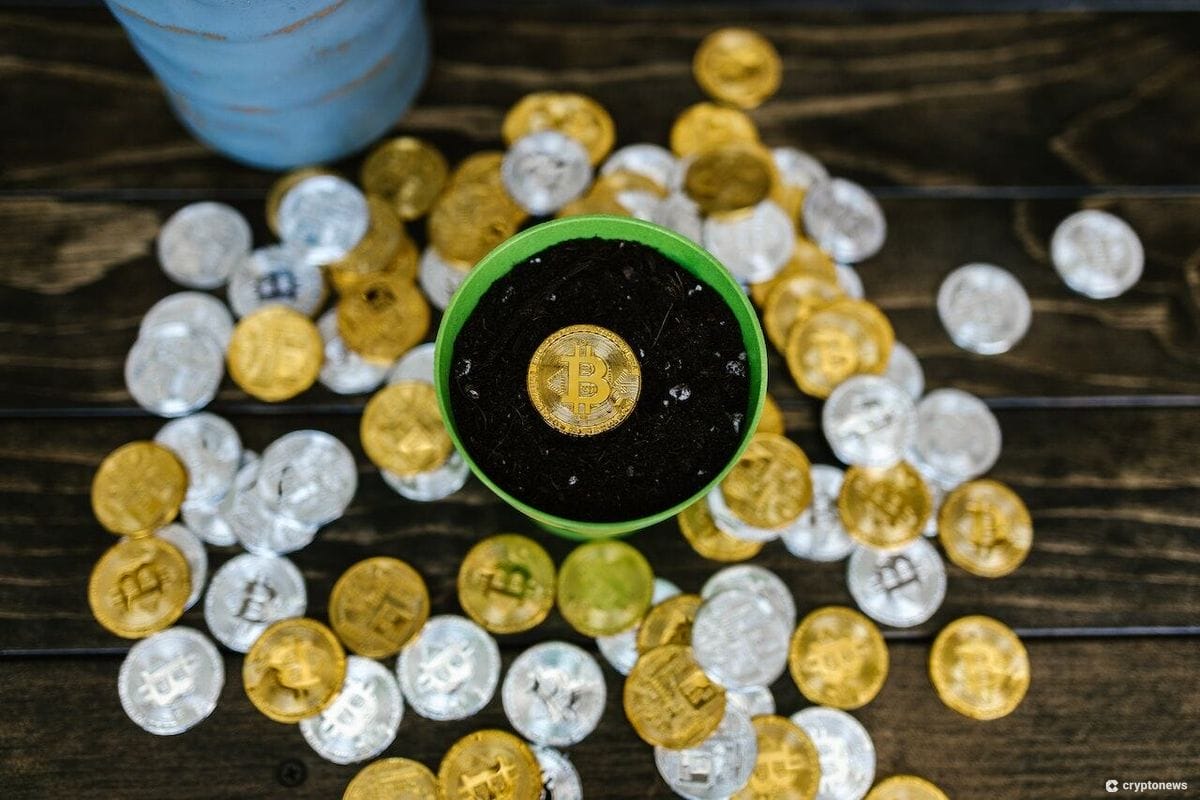
 Connor Brooke
Connor Brooke 

 Nick Pappas
Nick Pappas